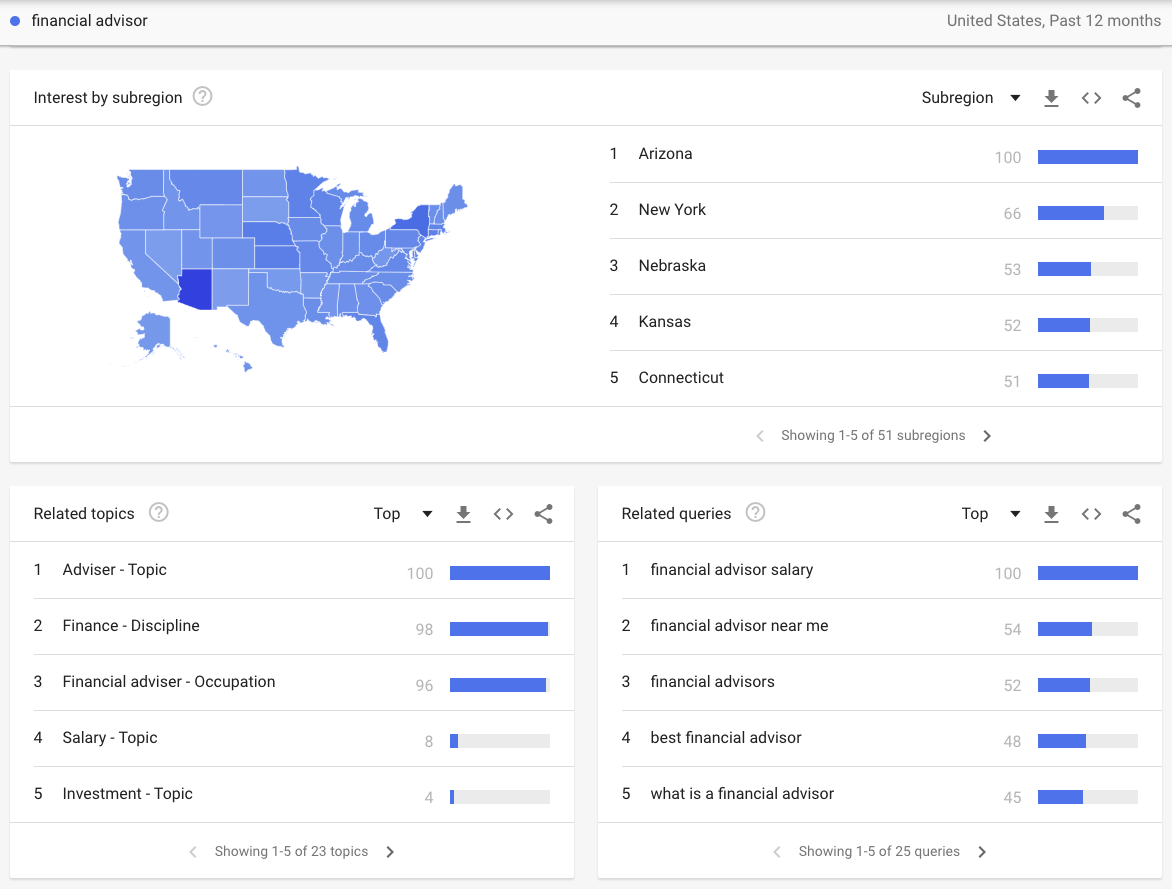The higher that your website ranks on search engines, the higher your possibility is of more website visitors, and ultimately more visitors converting into leads.
However, this isn't always the case.
Not all website traffic is valuable.
So how do you get more of the right people, your target audience, to your website in the first place?
Well first, you need to know who your target audience is.
If you don't, we've created a How-To Guide: Identifying Your Target Audience & Personalizing Your Online Presence to get you started.
After that, it comes down to using the correct keywords to personalize and improve your website's search engine optimization (SEO).
SEO is a crucial element of your digital strategy because it functions as the magnet for your website, drawing in your prospects.
Here’s a quick guide to SEO for financial advisors, particularly leveraging keywords, to help more of your clients find and hire you!
What Are Keywords & Why Do They Matter?
To decide which websites should show up first for a particular search query, search engines like Google have bots that scan (crawl) web pages and analyze their contents.
What they do is analyze the words on the page, evaluate the organization of a page, and monitor how people respond to it.
Basically, these bots help the search engine determine the purpose of a page based on its words and if it's providing the intended value.
To show up when your prospects are searching for a particular phrase (keyword), you must strategically use that keyword in your content.
But how does it work?
4 Key Steps For Leveraging Keywords To Improve SEO for Financial Advisors
When optimizing your website to increase your visibility, you'll need to know exactly what your target audience is searching for, and what terms they are using to search for your services.
Once you know the keywords that they are searching for, you’ll need to use them properly in your content.
Not sure where to start? Follow these 4 key steps:
1. Find Industry-Specific Keywords
To find the keywords being searched for in your industry, perform keyword research using a tool like Google Trends.
This free tool allows you to see which word combinations people are searching for the most.
For example, if you type “financial advisor” into Google Trends, you can view the interest in the search term over a specified period in a specific region.
From there, you can see the top search terms related to the main topic as well as those that are rising in popularity.
This will also help you to develop a better understanding of the related topics and queries you can include in your content to help you rank on Google's search engine results pages.

Don't forget to make a list and document the keywords you want to include in your content!
Now, you'll probably search for keywords that are more relevant to your location, expertise, and experience, including phrases that you know your target audience is using to find advisors like you.
More on that in Step 2.
2. Find Relevant Keywords For Your Business Using Analytics
Next, find the keywords people are already using to find your website.
There are free tools that you can leverage, such as Google Analytics and Google Search Console.
With these platforms, you'll be able to see exactly which keywords people are searching for and how your website is ranking for those words.
Then, you can take those keywords and optimize your site for them so you rank better.
Tip: Since domain authority is one of the key factors that contribute to SEO, creating a Google My Business account (now called Google Business Profile) is one more way to signal to Google that you have a genuine and trustworthy business.
This will help boost your overall SEO and significantly help with your local SEO - which is when prospects are searching for Financial Advisors near your business location.
Check out this blog with step-by-step instructions on how to set up your Google My Business account if you don't already have one!
3. Use The Right Keywords In The Right Places
Once you have your keywords, it’s time to put them in the right places.
Often, you will have a primary keyword and secondary keywords for each page.
The primary keyword is the main focus.
It should appear in the:
- Title of the page
- H1 heading
- Within the first paragraph, ideally in the first sentence
- Meta description
- Image alt text
- Page slug (part of the URL)
- Naturally throughout the content itself
Secondary keywords are closely related to the primary keyword and should also be mentioned naturally in the body text.
As you can see, there are many opportunities to insert keywords to improve your chances of ranking, however, there is such a thing as too many keywords.
4. Don’t Use Too Many Keywords
While you need to include keywords strategically, don’t overdo it.
Have you ever read a web page that sounded extremely awkward because it overused the same phrase?
Ex: If you want to learn about keywords, you came to the right place to learn about keywords because we are going to teach you about keywords.
Annoying, right?
That’s referred to as “keyword stuffing” and it comes at the cost of the reader’s experience.
While you want to send the right signals to the search engines, you also need to provide the best experience for your website visitors or they will click away, which Google also tracks.
If you have a high bounce rate on your page, as in, a lot of traffic leaves your website after a short period of time, Google will take note of this and assume that your content is not providing enough value, negatively impacting your search engine rankings.
So while it is important to optimize your website and content for keywords, always write for humans first, and the bots second.
Expedite Your Visibility!
SEO takes a combination of knowledge, persistence, and time.
In our latest SEO webinar, we had FinMar experts share their strategies and recommendations to attract your target audience and drive more traffic to your website with personalized SEO strategies you can start today! Click here to unlock your access to the webinar replay.








